Abstract
OBJECTIVE: Strictures of the upper airway caused by burns have features distinct from other benign stenoses. The authors reviewed their experience with burn-related stenoses to define the principles of treatment. SUMMARY BACKGROUND DATA: The combined effects of inhaled gases and heat in burn victims produce an intense, often transmural, inflammation of the airway, further complicated by intubation. The incidence of laryngotracheal strictures in survivors of inhalation injury is high, but the reported experience with their treatment is limited and often unduly separated into injuries of larynx and trachea. METHODS: Presentation, treatment, and long-term follow-up are reviewed in 9 women and 9 men age 9 to 63 years, who were evaluated over a 22 year period for chronic airway compromise after inhalation injury. There were 18 tracheal stenoses, 14 subglottic strictures, and 2 main bronchial stenoses. Laryngotracheal strictures stenosis. T-tubes were placed in 15 patients, in low subglottic or tracheal stenosis below the vocal cords, in high subglottic stenosis through the vocal cords, and as a stent after resection of subglottic stenosis. RESULTS: There were two deaths during follow-up, one from respiratory failure and one from an unrelated cause. Two patients underwent evaluation only. Early in this series, one tracheal and one laryngotracheal resection resulted in prompt restenosis. Of the remaining 14 patients, 9 are without airway support from 2 to 20 years later. Four have permanent tracheal tubes. One patient required tracheostomy 8 years after successful subglottic reconstruction. CONCLUSIONS: Strictures of the upper airway related to inhalation injury are associated with prolonged inflammation and involve larynx and trachea in a majority of patients. These complex injuries respond to prolonged tracheal stenting (mean, 28 months) and resection or stenting of subglottic stenoses with recovery of a functional airway and voice in most patients. Early tracheal resection should be avoided.
Full text
PDF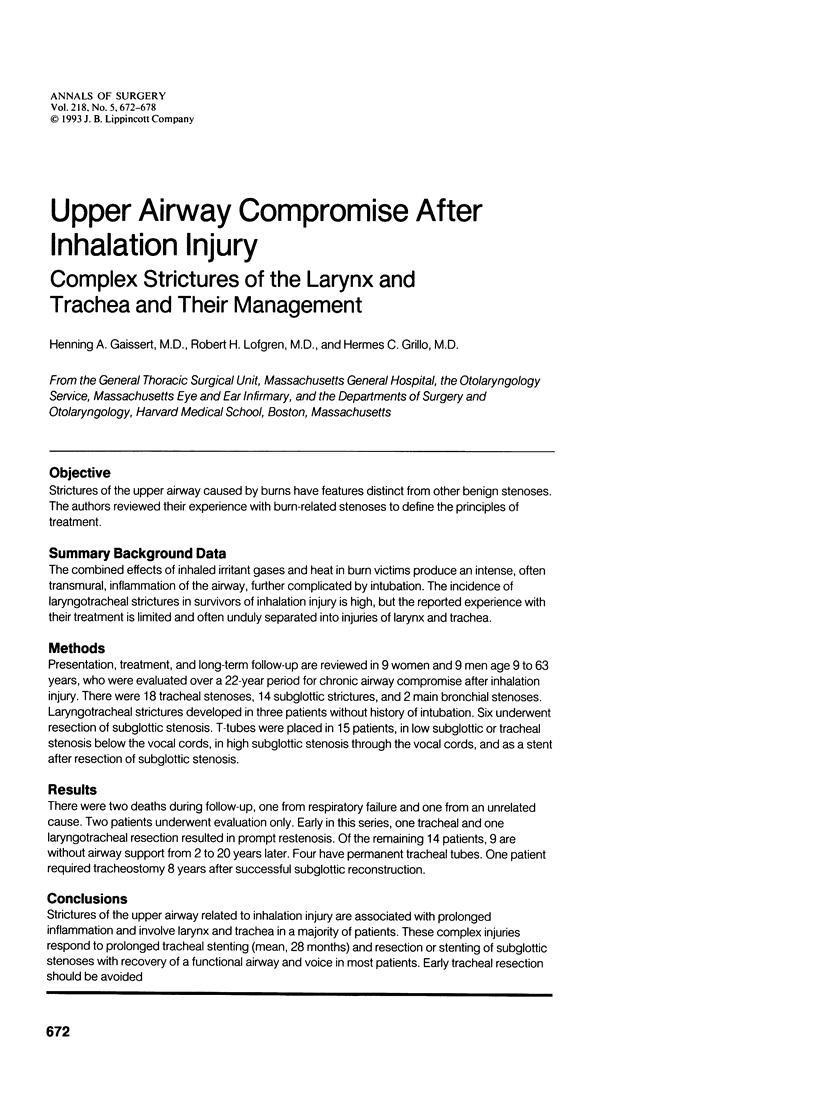
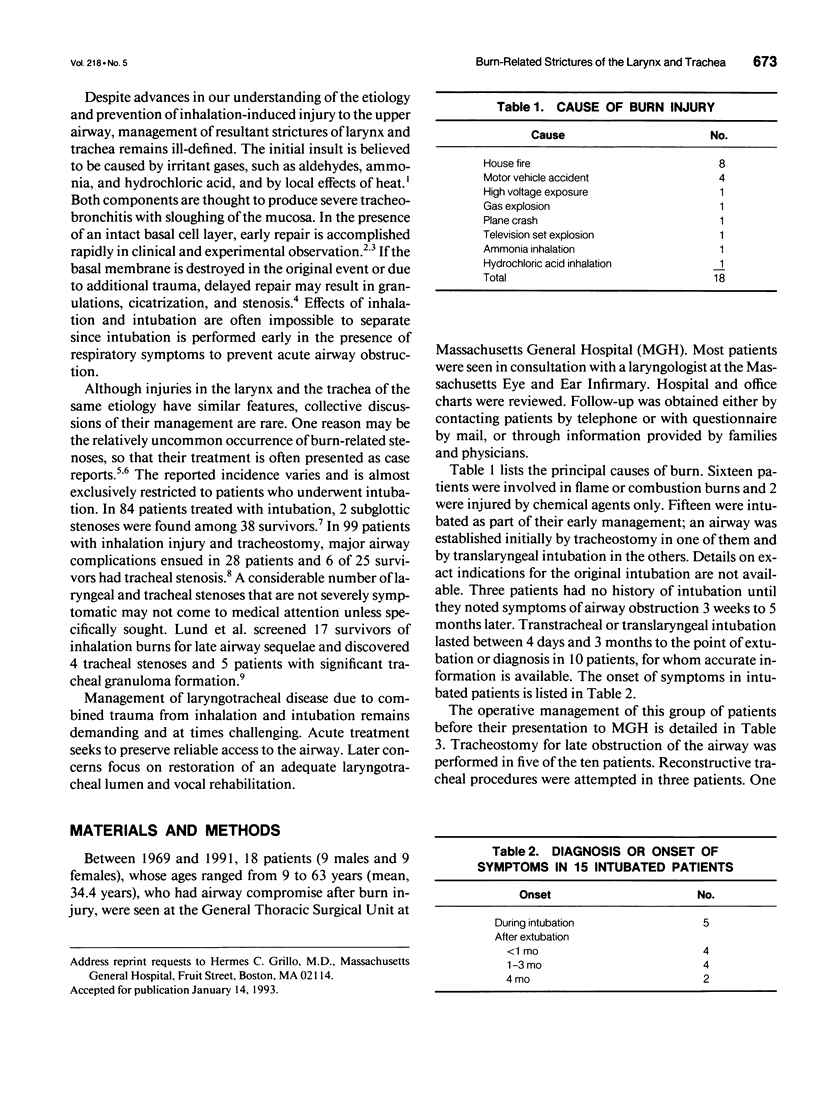
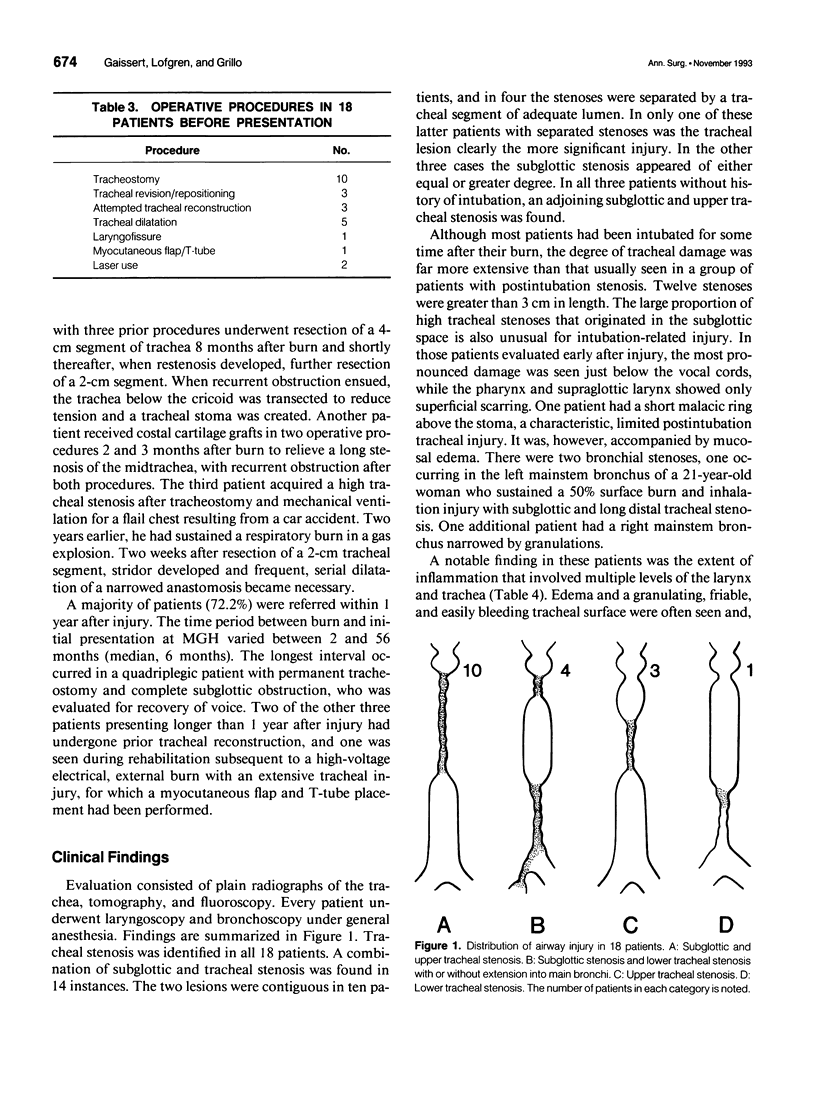
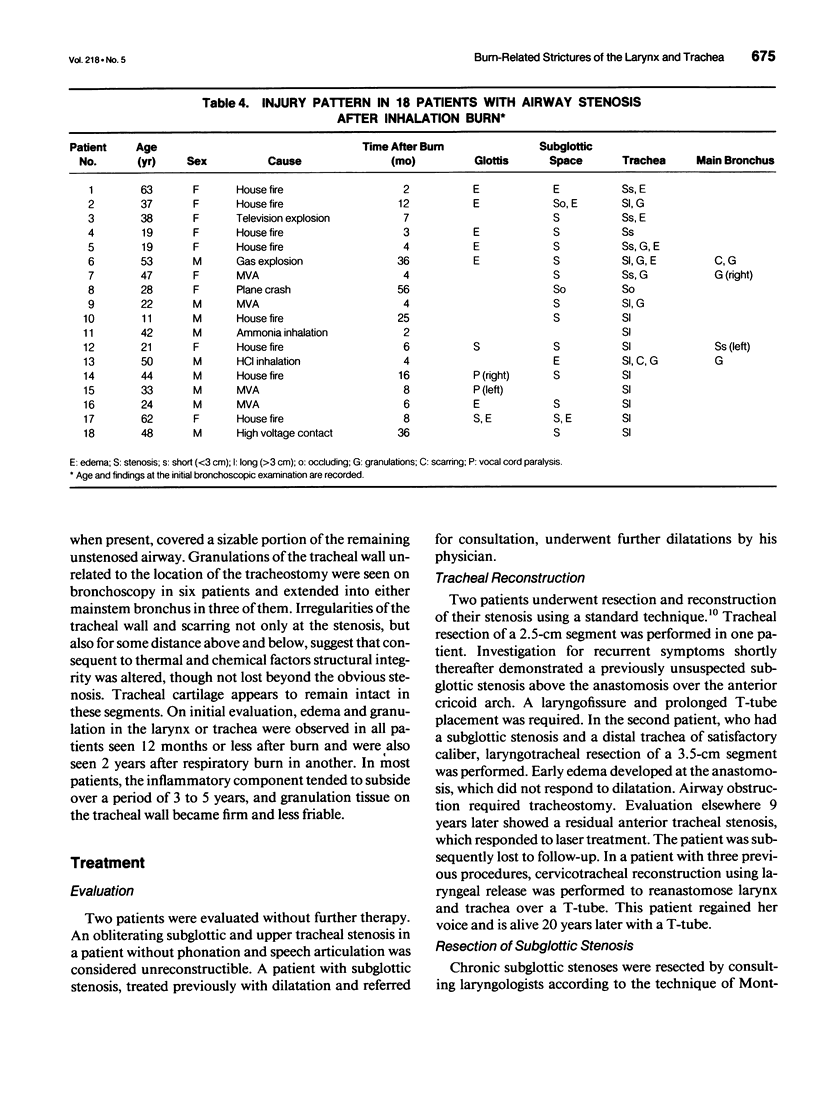
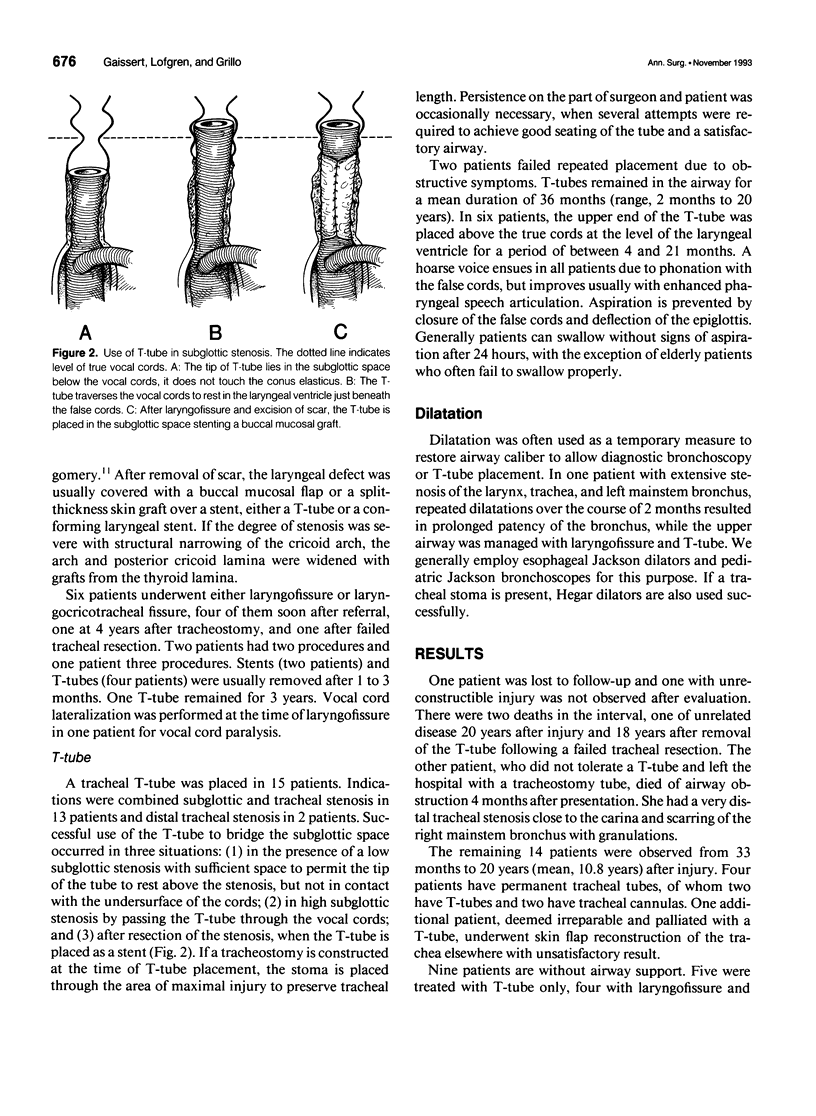
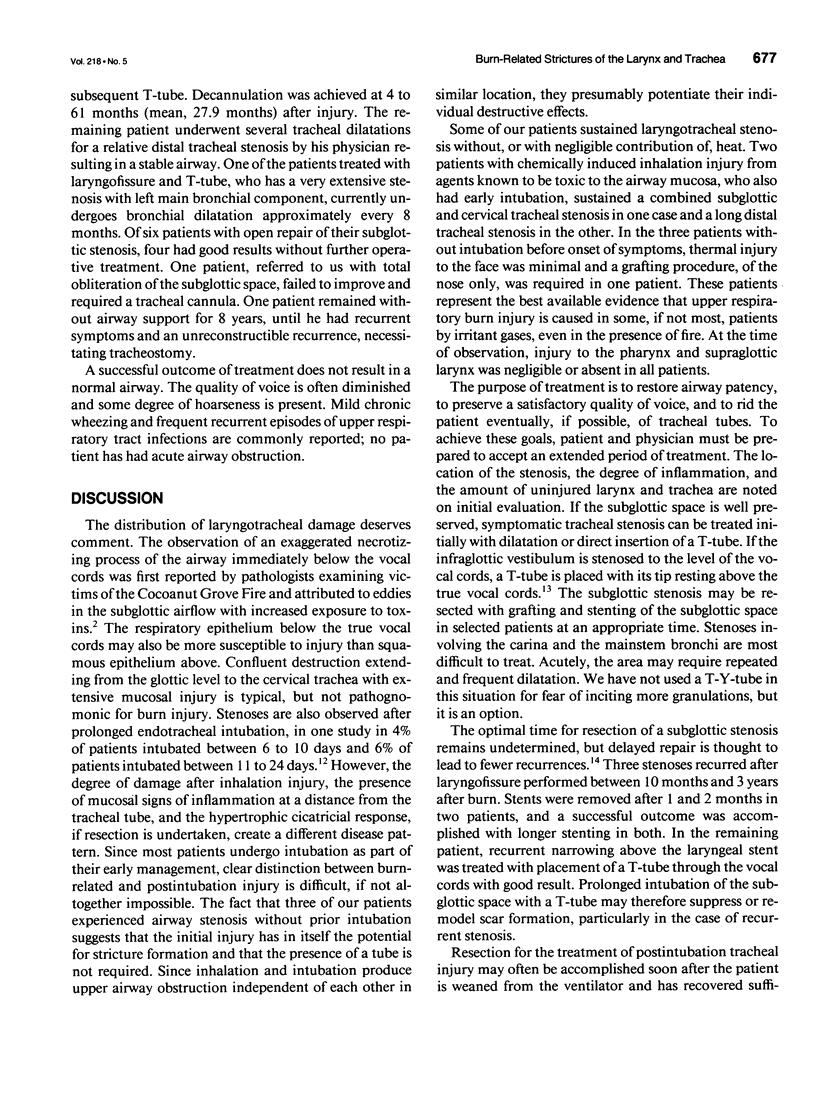
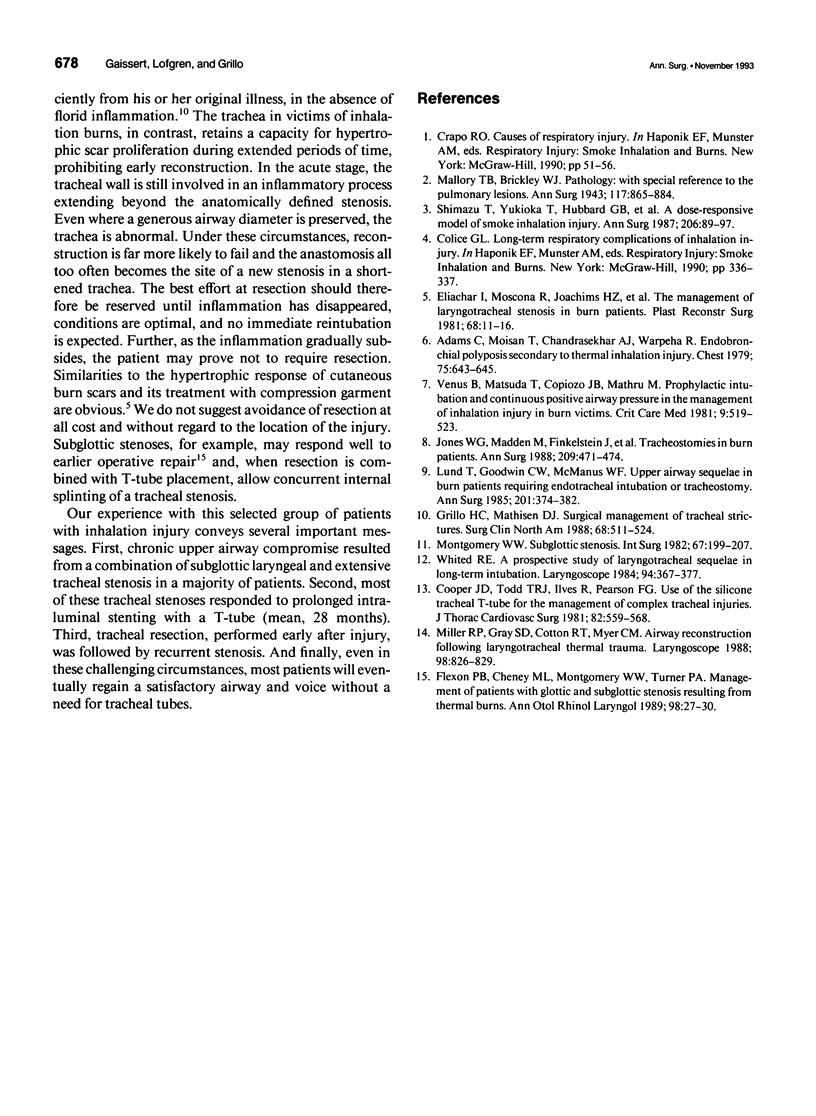
Selected References
These references are in PubMed. This may not be the complete list of references from this article.
- Adams C., Moisan T., Chandrasekhar A. J., Warpeha R. Endobronchial polyposis secondary to thermal inhalational injury. Chest. 1979 May;75(5):643–645. doi: 10.1378/chest.75.5.643. [DOI] [PubMed] [Google Scholar]
- Cooper J. D., Todd T. R., Ilves R., Pearson F. G. Use of the silicone tracheal T-tube for the management of complex tracheal injuries. J Thorac Cardiovasc Surg. 1981 Oct;82(4):559–568. [PubMed] [Google Scholar]
- Eliachar I., Moscona R., Joachims H. Z., Hirshowitz B., Shilo R. The management of laryngotracheal stenosis in burned patients. Plast Reconstr Surg. 1981 Jul;68(1):11–17. doi: 10.1097/00006534-198107000-00003. [DOI] [PubMed] [Google Scholar]
- Flexon P. B., Cheney M. L., Montgomery W. W., Turner P. A. Management of patients with glottic and subglottic stenosis resulting from thermal burns. Ann Otol Rhinol Laryngol. 1989 Jan;98(1 Pt 1):27–30. doi: 10.1177/000348948909800106. [DOI] [PubMed] [Google Scholar]
- Grillo H. C., Mathisen D. J. Surgical management of tracheal strictures. Surg Clin North Am. 1988 Jun;68(3):511–524. doi: 10.1016/s0039-6109(16)44531-7. [DOI] [PubMed] [Google Scholar]
- Jones W. G., Madden M., Finkelstein J., Yurt R. W., Goodwin C. W. Tracheostomies in burn patients. Ann Surg. 1989 Apr;209(4):471–474. doi: 10.1097/00000658-198904000-00013. [DOI] [PMC free article] [PubMed] [Google Scholar]
- Lund T., Goodwin C. W., McManus W. F., Shirani K. Z., Stallings R. J., Mason A. D., Jr, Pruitt B. A., Jr Upper airway sequelae in burn patients requiring endotracheal intubation or tracheostomy. Ann Surg. 1985 Mar;201(3):374–382. doi: 10.1097/00000658-198503000-00021. [DOI] [PMC free article] [PubMed] [Google Scholar]
- Mallory T. B., Brickley W. J. PATHOLOGY: WITH SPECIAL REFERENCE TO THE PULMONARY LESIONS. Ann Surg. 1943 Jun;117(6):865–884. doi: 10.1097/00000658-194311760-00008. [DOI] [PMC free article] [PubMed] [Google Scholar]
- Miller R. P., Gray S. D., Cotton R. T., Myer C. M., 3rd Airway reconstruction following laryngotracheal thermal trauma. Laryngoscope. 1988 Aug;98(8 Pt 1):826–829. doi: 10.1288/00005537-198808000-00007. [DOI] [PubMed] [Google Scholar]
- Montgomery W. W. Subglottic stenosis. Int Surg. 1982 Jul-Sep;67(3):199–207. [PubMed] [Google Scholar]
- Shimazu T., Yukioka T., Hubbard G. B., Langlinais P. C., Mason A. D., Jr, Pruitt B. A., Jr A dose-responsive model of smoke inhalation injury. Severity-related alteration in cardiopulmonary function. Ann Surg. 1987 Jul;206(1):89–98. doi: 10.1097/00000658-198707000-00014. [DOI] [PMC free article] [PubMed] [Google Scholar]
- Venus B., Matsuda T., Copiozo J. B., Mathru M. Prophylactic intubation and continuous positive airway pressure in the management of inhalation injury in burn victims. Crit Care Med. 1981 Jul;9(7):519–523. doi: 10.1097/00003246-198107000-00004. [DOI] [PubMed] [Google Scholar]
- Whited R. E. A prospective study of laryngotracheal sequelae in long-term intubation. Laryngoscope. 1984 Mar;94(3):367–377. doi: 10.1288/00005537-198403000-00014. [DOI] [PubMed] [Google Scholar]


